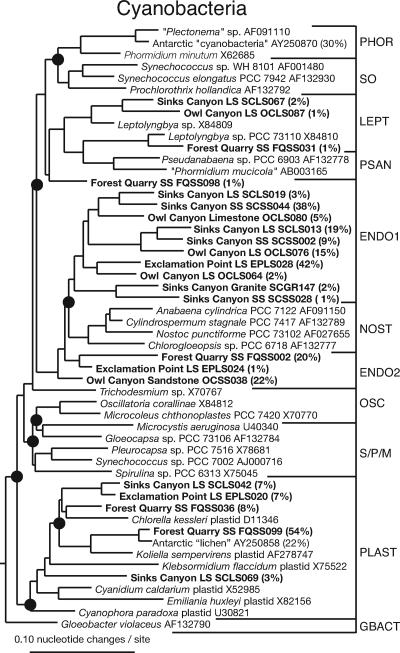FIG. 1.
Cyanobacteria: diagrammatic tree of Rocky Mountain endolithic cyanobacterial sequences and reference sequences representative of cyanobacterial diversity (35). Representative endolithic sequences are indicated by bold type. The percentages indicate the abundance of sequence types in the community. Solid circles indicate nodes with ≥70% bootstrap support as determined by neighbor joining with maximum likelihood rate corrections and Bayesian inference. The tree was rooted with Escherichia coli. The following sequence groups (35) are indicated by brackets on the right: Phormidium (PHOR), Synechococcus (SO), Leptolynbia (LEPT), Pseudoanabaena (PSAN), endolith-specific group 1 (ENDO1), Nostocales (NOST), endolith-specific group 2 (ENDO2) Oscillatoria (OSC), Synechocystis/Pleurocapsa/Microcystis (S/P/M), chloroplasts (PLAST), and Gloeobacter (GBACT). Rock types are indicated as follows: SS, sandstone; LS, limestone; and GR, granite.

